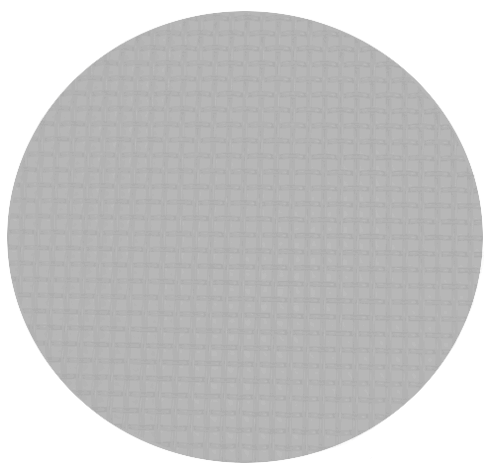When you own a quality piece of Urban Collections solid wood furniture, we believe you should know your furniture on the inside as well as the outside. Most manufacturers do not dwell on the finish of their furniture, but at the Urban Collections it is one of the most important parts of our product.
Using only the finest raw materials gathered from around the world, our stains and finishes are blended to a richness and clarity found nowhere else. It is this tradition, dedication and attention to detail that renders our consistent, vibrant colors; unmatched durability and luxurious, silky feel.
Answer: Urban Collections’ finishes are made with coconut oil, the only natural oil that is non-yellowing, and two other resins that have great chemical and water resistance. These are blended with other additives that “rise to the surface” — to give that trademark luxurious feel—and environmentally responsible solvents that complete the blend. Before canning, all finishes pass through custom, hand-built, proprietary, filter units that filter down to 24 microns; that’s six times finer than a human hair! The filtering process renders a consistent, clear, clean product 100 percent of the time.
Before application, our finishers add a catalyst to the varnish. This starts a cross-linking reaction within the finish and is responsible for the tightly woven molecular configuration of the finish film. It is from this that the durability and water resistance come.
All finish failures come from under the finish, not on top. In a loosely woven lacquer, film, water and chemicals can pass right through, resulting in swelling and staining of the actual wood. When the wood swells the finish “pops off” or comes loose, thus opening the way for total failure (white rings or blackened or darkened wood).
The catalyzed, or cross-linked, film of a catalyzed varnish actually creates a solid wall that not only resists moisture and chemicals but also holds them in place so they can be wiped up and cleaned thoroughly.
Lastly, a good finish must be flexible so it can give with the wood. Our finish contains an additive very similar to the new high-tech exterior sidings available on today’s homes. It is this additive that holds the finish tight to the wood even if it is damaged by abrasion or impact, thus keeping water and chemicals out.

Answer: Our finish is subjected to twenty severe cold check cycles. A single cold check cycle consists of 12 hours of natural curing time, one hour at -32° F, one hour at +150° F, and one hour at ambient temperature. This test takes almost two weeks to complete. After testing it is subjected to a battery of chemical, food, and water resistance tests. Only after each and every batch is tested is it released for use.
Besides the #1 enemy of furniture finishes – acetone – here are other chemicals and foods that damage the average finish tested with the chemical or food left on the wood furniture for 24 hours. It had no effect on the Catalyzed Conversion Varnish:


| 100 proof alcohol | 24 hrs no effect |
|---|---|
| 200 proof alcohol | 24 hrs slight effect |
| 50/50 Alcohol/Water | 24 hrs no effect |
| Coffee | 24 hrs no effect |
| Cooking Fat | 24 hrs no effect |
| Grape Juice | 24 hrs no effect |
| Ketchup | 24 hrs no effect |
| Lemon Juice | 24 hrs no effect |
| Margarine | 24 hrs no effect |
| Mayonnaise | 24 hrs no effect |
| Milk | 24 hrs no effect |
| Naphtha | 24 hrs no effect |
| Oil Base paint | 24 hrs no effect |
| Olive Oil | 24 hrs no effect |
| Orange Juice | 24 hrs no effect |
| Red Ink | 24 hrs no effect |
| Tea | 24 hrs no effect |
| Turpentine | 24 hrs no effect |
| Vinegar | 24 hrs no effect |
| Water | 24 hrs slight effect |
Under a microscope you can see the difference of the molecular structure of the finishes. On the left notice the porous web of the lacquer finish which allows moisture to creep under the finish and destroy the beauty of the finish, compared to on the right a close-up of the tight molecular structure of the Catalyzed Conversion Varnish which actually bonds with the fibers of the wood and does not allow even the most harmful chemicals and stains to seep through.
Lacquer finish after two minutes with a teaspoon of common fingernail polish remover (acetone). On the right a piece of maple protected with the Urban Collections’ superior conversion varnish. The wood surface is not altered and it is just as good as new.
Our Catalyzed Varnishes are durable and resistant to most household spills; however, spills should be wiped up promptly to avoid potential problems.
Answer: The main reasons other companies do not use a finish like ours are cost, time, space and a shortage of skilled artisan finishers that know how to apply this finish correctly.
First of all, the cost is almost double that of import lacquer finishes.
Second, it takes time to apply the hand-wiped stain, hand-sand the catalyzed sealer, and apply the finish coat of catalyzed varnish.
Third, a great deal of precious manufacturing floor space is required for the various coats to naturally dry and cure. We do not force-dry our finishes as this may create a brittle, too-hard surface. Cookie-cutter companies just can’t afford these vital steps.
Your wood furniture should look as good in ten years as it does right now.
Our goal is to provide you, the consumer, with all of the tools necessary to care for your Urban Collections Heirlooms so they look “showroom new” for many years to come. With the Urban Collections, the sale does not end when you walk out the door. we want to take the time to teach you the proper way to take care of all of your interior household needs with our wide range of products.